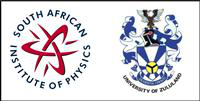Speaker
Apply to be<br> considered for a student <br> award (Yes / No)?
no
Abstract content <br> (Max 300 words)
After the realization of the circular current’s model of two merged distributions of distinct Cartesian x- and y-component line current elements as respective Cartesian line magnetic dipoles, we analytically compare its two Cartesian dipolar torque components to those of a z-axis symmetric electric dipolar distribution. Starting with the indisputable concept of torques as moments of respective forces, individual elemental Cartesian dipolar torque components are constructed under identical field directions, then integrated and recombined into the overall magnetic or electric dipolar torque. Only magnetic dipolar torque on the x component magnetic dipoles is in the negative x-direction and is due to a z-force component created by the y-component magnetic field, whereas only the magnetic torque on the y-component magnetic dipoles is in the positive y-direction and is due to a z-force component created by the x-component magnetic field. For the z-axis electric dipolar distribution, only its x-component electric dipolar torque is due to the y-component electric force created by the y-component electric field, while it is vice versa for its y-component electric dipolar torque. In spite of the diverse origins of these Cartesian torque components, two reasons permit their ultimate recombination into a triple or duo vector cross product involving a dipolar orientation vector, a magnetic vector or electric scalar charge and all three Cartesian field components. The Cartesian force on each dipole due to the z-component magnetic or electric field is parallel to its dipolar orientation vector, so that its related magnetic or electric Cartesian torque component vanishes. The integrated magnetic dipolar moments of the circular current’s two distinct Cartesian magnetic dipoles are equal, but it is their sum which constitutes the magnetic dipolar moment of the whole circular current. The z-axis electric dipole’s two Cartesian torque components involve only one electric dipole moment. It is thus illustrates that the traditional ad hoc definition of a circular current’s magnetic dipole moment errs by a factor of 2 for failing to note that equality of any two moments does not necessarily mean equality of the two physical quantities generating them. This is also assisted by similar inequalities characterizing magnetic and electric Cartesian dipolar torque components.
Would you like to <br> submit a short paper <br> for the Conference <br> Proceedings (Yes / No)?
yes

